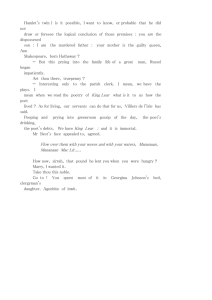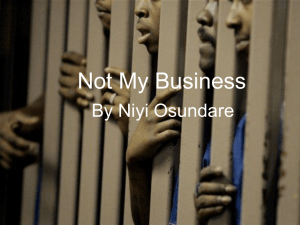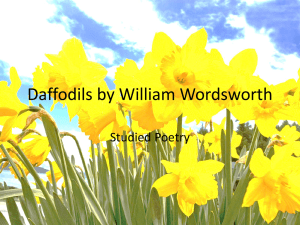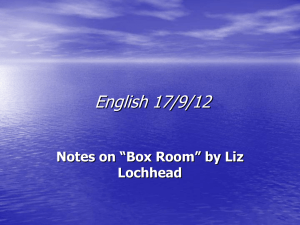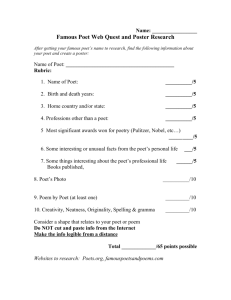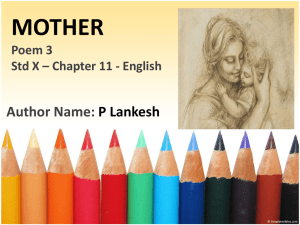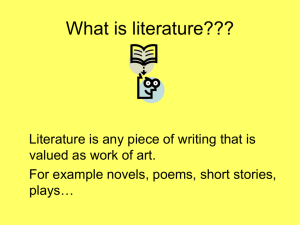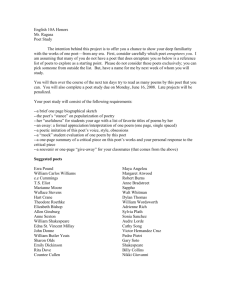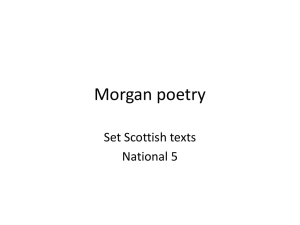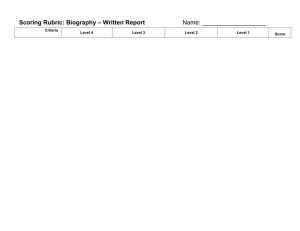conscientious-objector
advertisement
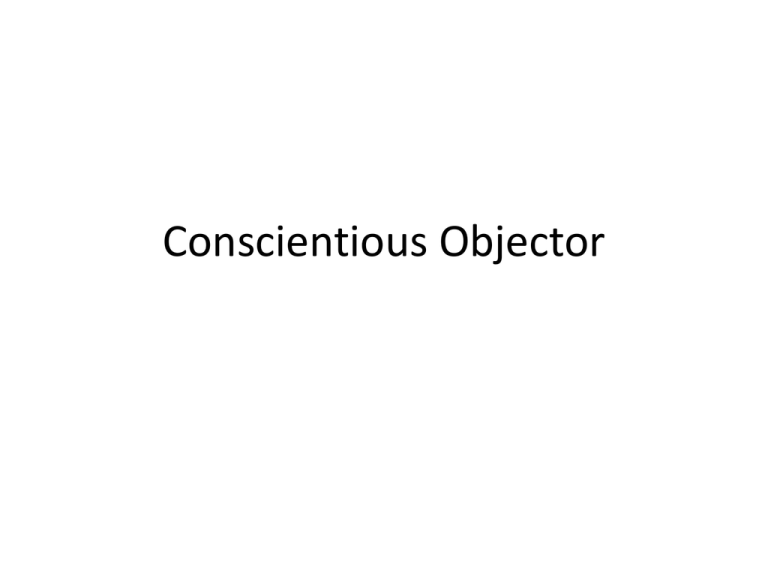
Conscientious Objector What is a Conscientious Objector? • This is a person who is strongly against war and fighting and who refuses to fight on the grounds of freedom of thought, conscience, or religion. Onomatopoeia adds to the personification Repetition shows that War is everywhere I hear him leading his horse out of the stall; I hear the clatter on the barn-floor. He is in haste; he has business in Cuba, business in the Balkans, many calls to make this morning. But I will not hold the bridle while he cinches the girth. And he may mount by himself; I will not give him a leg up. Caesura draws attention to the urgency I will not help Violence – suggests that he may be provoked A traitor to the army? Though he flick my shoulders with his whip, I will not tell him which way the fox ran. With his hoof on my breast, I will not tell him where the black boy hides in the swamp. I shall die, but that is all that I shall do for Death; I am not on his pay-roll. I will not profit from war, like some do Reference to racism and other victimised minority groups I will not tell him the whereabouts of my friends nor of my enemies either. Though he promises me much, I will not map him the route to any man’s door. This hints at the recruitment methods used to get people to join up Links to Other poems… • Anti-War – The Drum, Exposure • Aspects of WarExposure, The Drum, O What is that Sound? • Death – Exposure, Your Dad did What?, The Drum, Our Sharpeville, Comparison Question Compare how the writers of “Conscientious Objector and one other poem use methods to explore attitudes towards war. Write about: • What each poet’s attitude is • How each poet organises their ideas • How each poet uses language to present these attitudes Possible Poems • Exposure • The Drum • O What is that Sound? • We will look at Exposure What each poet’s attitude is towards War… Similarities: • Each poem is anti-war • Both refer to loss of life with a sense that this is a waste Differences: • CO – the speaker plays no part in war and refuses to help bring about Death. There is a sense that WAR is the enemy • Ex – the characters in the poem are fighting in the war. They face Death daily. The enemy here is the weather and the opposing soldiers. How each poet organises their ideas CO: • Throughout, the poet presents a list of things she won’t do. Single line first stanza - stands out – sums up poet’s main idea. However… Exposure: • Eight regular stanzas with stanzas 6 referring to the past. Repetition of verse form in the final line of each stanza with a shorter line to sum up the soldier’s feelings. “But nothing happens” x 4 suggests war is pointless. Similarly… There is a repetitive strain in CO – “I will not…” and “I shall” which reflects the poet’s determination to be a pacifist. How each poet uses language to present these attitudes Similarities: • Personal pronouns – lots of “I” on CO – very personal – sense that she may be alone in her ideas. Lots of “we” and “Our” in Ex – emphasises that many men were in this position. • Language to suggest violence in both • Onomatopoeia – appeal to sense of sound • Imagery – Personification throughout CO – suggests that Death is the only winner in war and betrayal. Also – personification of the weather in Ex- to show how deadly an enemy it is – again – death is the only winner
